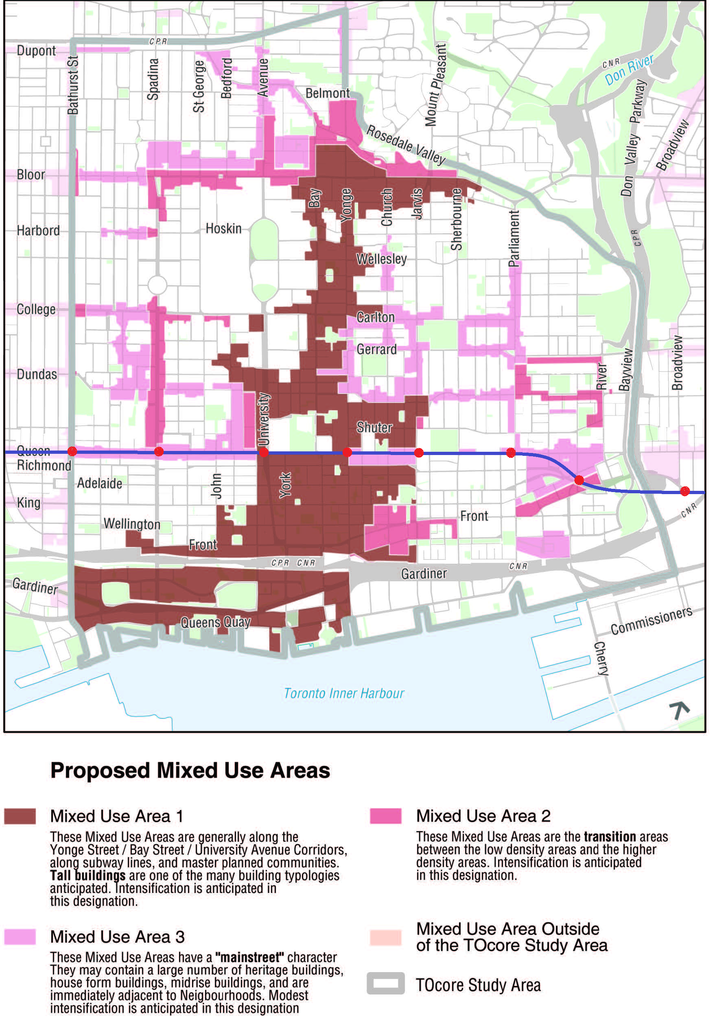Kitsune
Senior Member
Borrowing from the image you've sourced, it becomes even more abundantly clear how a station at Sherborune St makes absolutely no sense:
As depicted, Jarvis St lies at the eastern end of the skyscraper developments and would be the best suited location for a station to handle that density as it also neighbours three major institutions (St Michael's Hospital, Ryerson University and George Brown College).
That map also illustrates how Parliament St is a major secondary corridor and should be directly served by a station.
Sherbourne/Queen as shown on that map has zilch, nada, nothing worth serving with a direct subway stop. Please TPTB apply some common sense here and think of average walking times for the majority of transit users downtown. 2 stations are better than one and sometimes, as the Carlaw alignment today demonstrates, going the more expensive route benefits the most people in the long run.
Parliament will be 200m from Sherbourne secondary exit and no station is possible as the line needs turn south ahead of the intersection. Jarvis is just stuck in an awkward spot. They are not going to spend the 300 to 350 million for a station that would be 200 to 300m from Sherbourne, and 300 to 400 from Yonge, which would be the closest in the system except for Yonge-Queen and Osgoode, where that situation is forced due to building constraints (unless they go the Sydney route and start tearing down Office Towers for subway stations).

